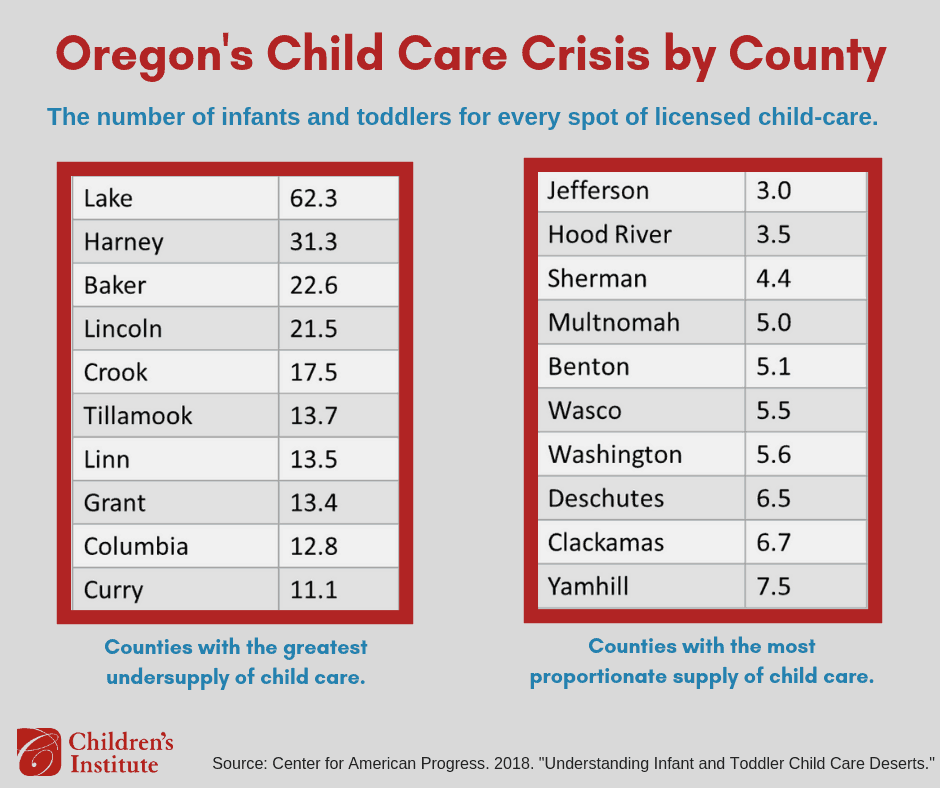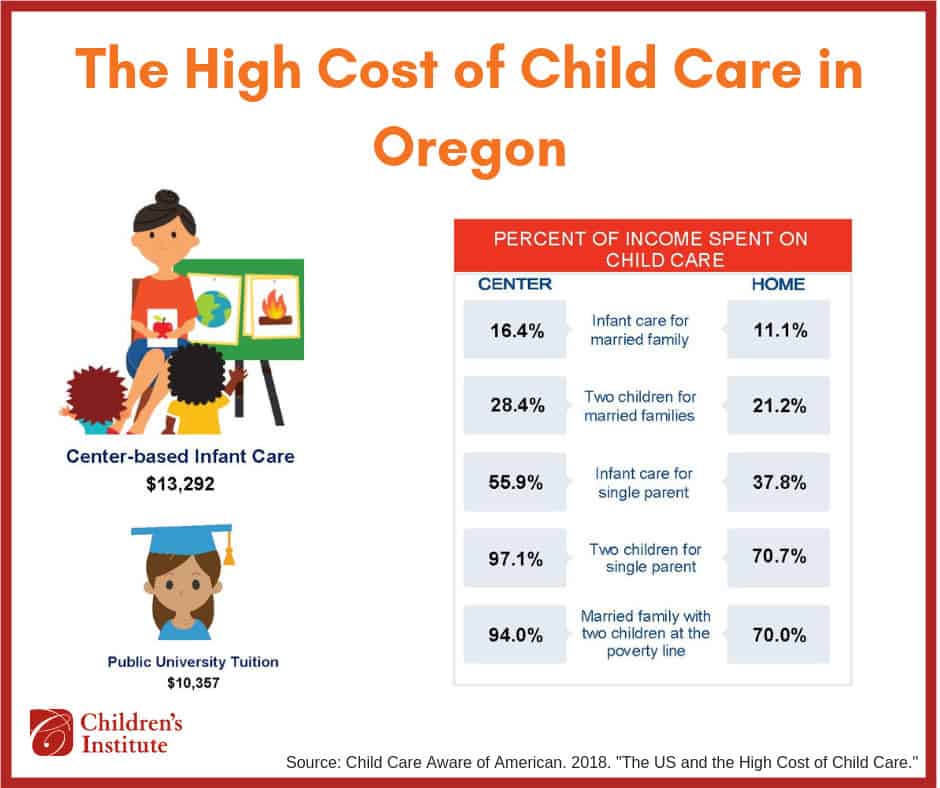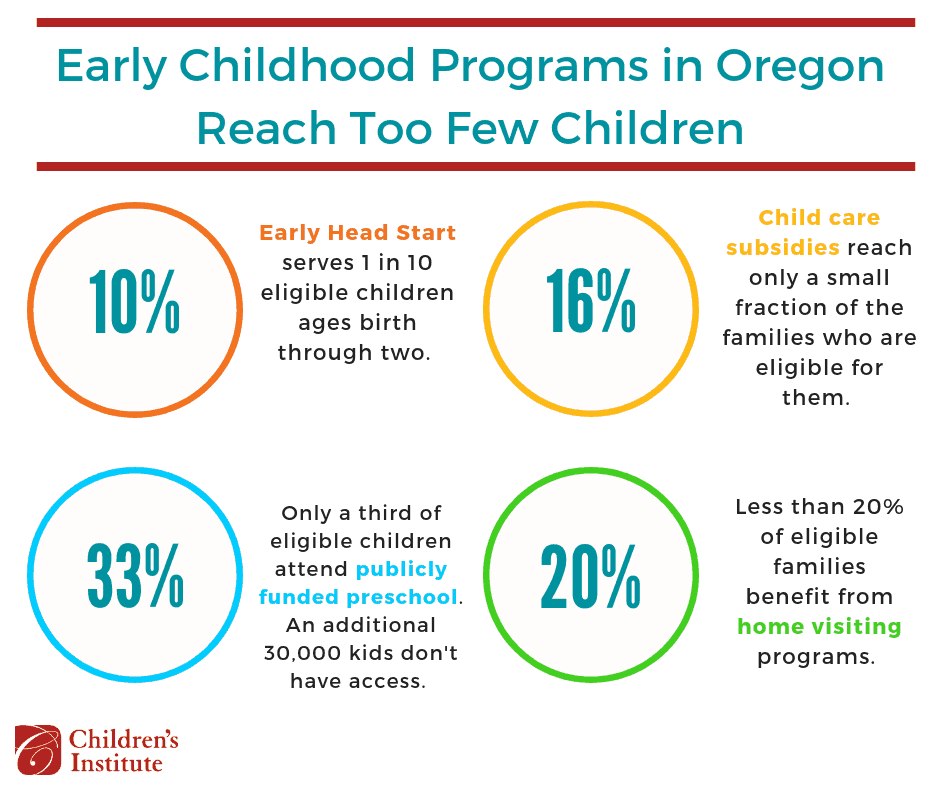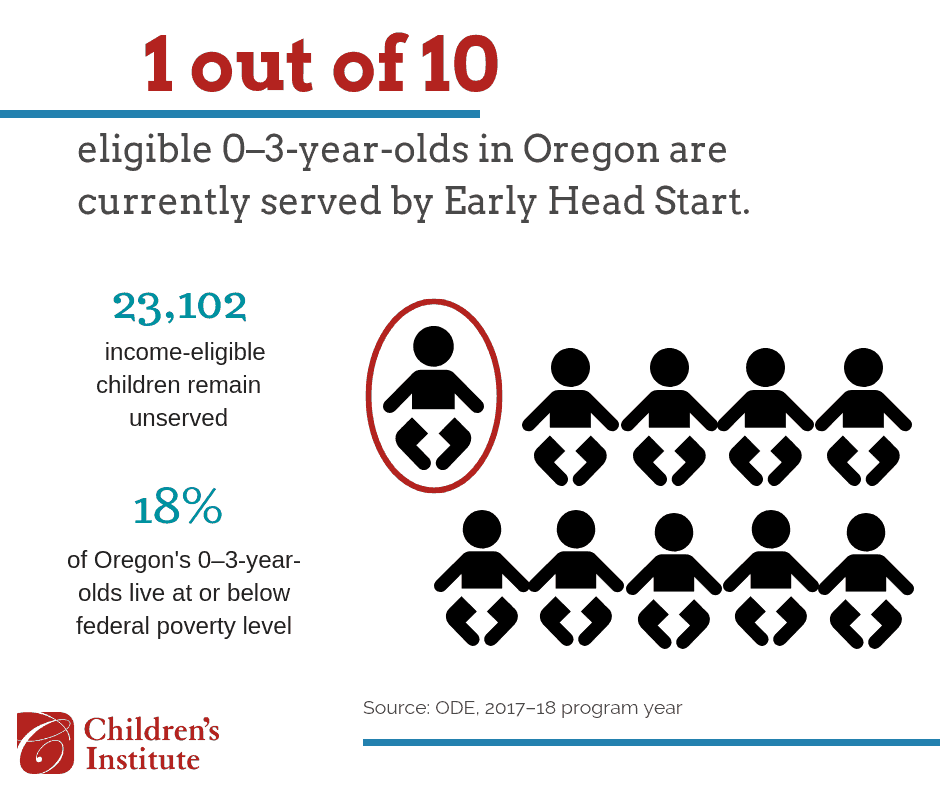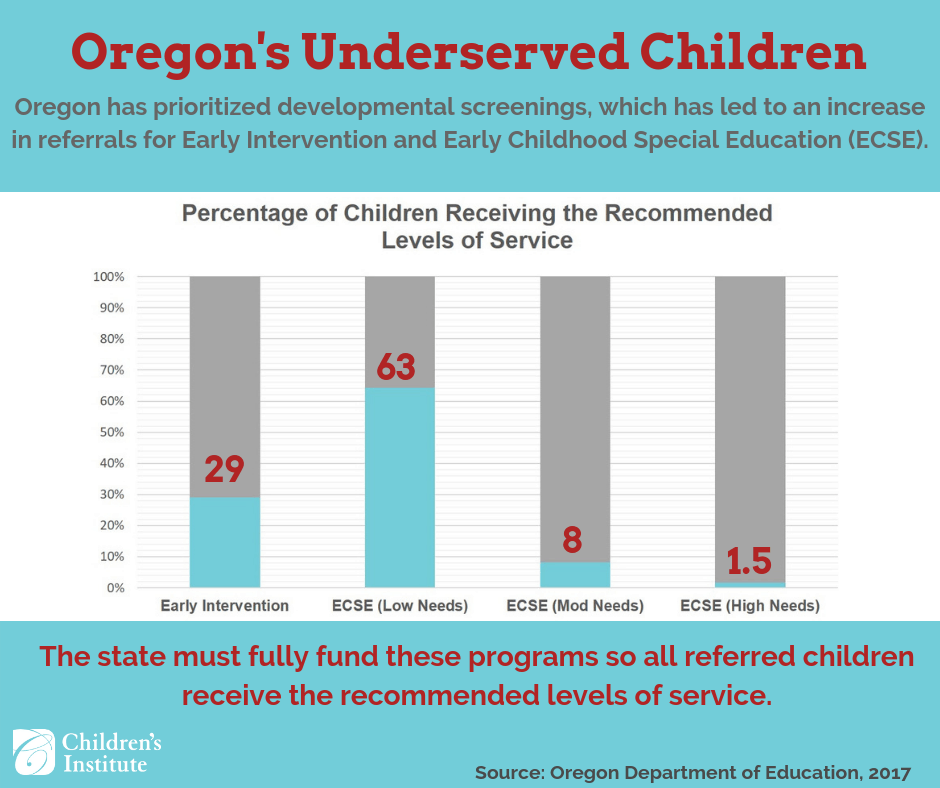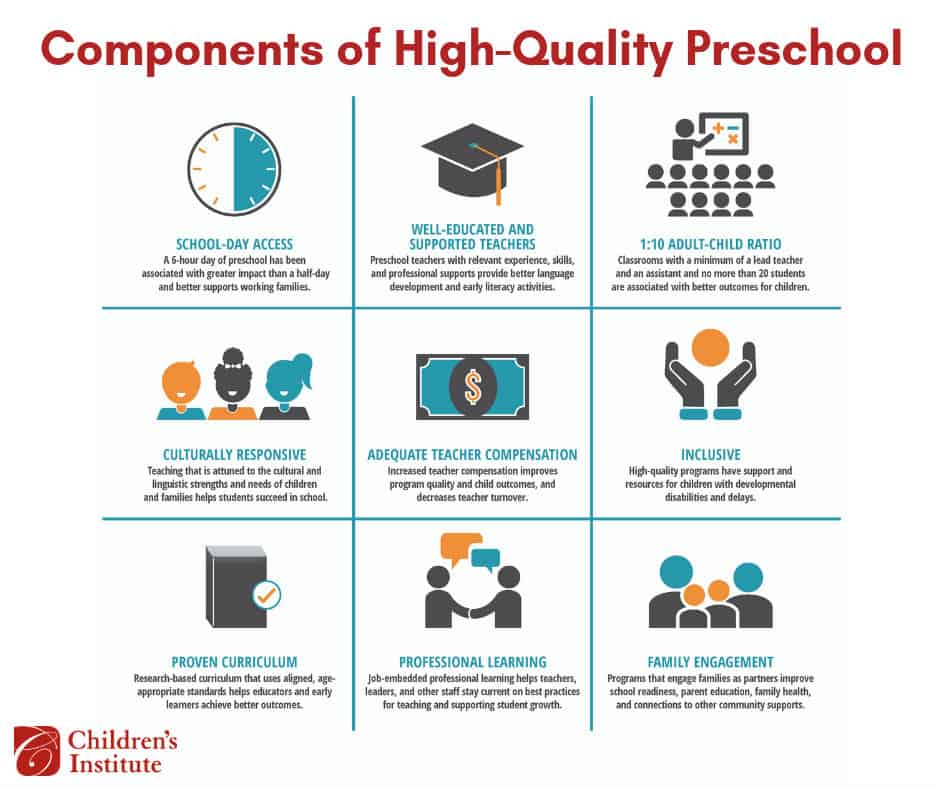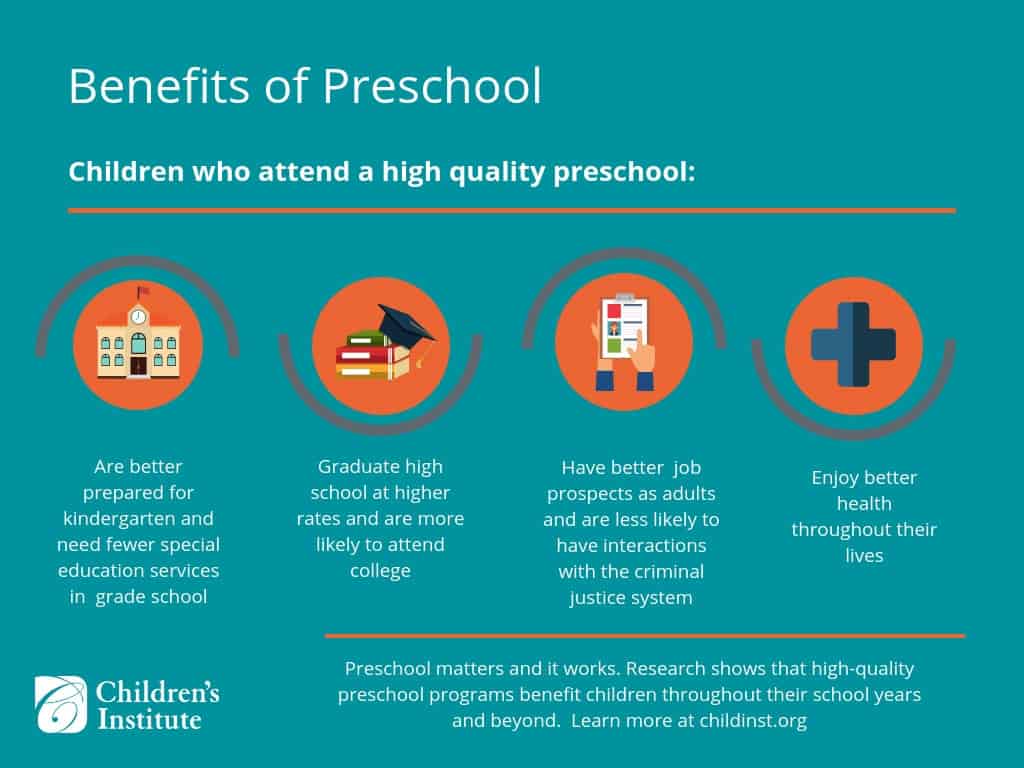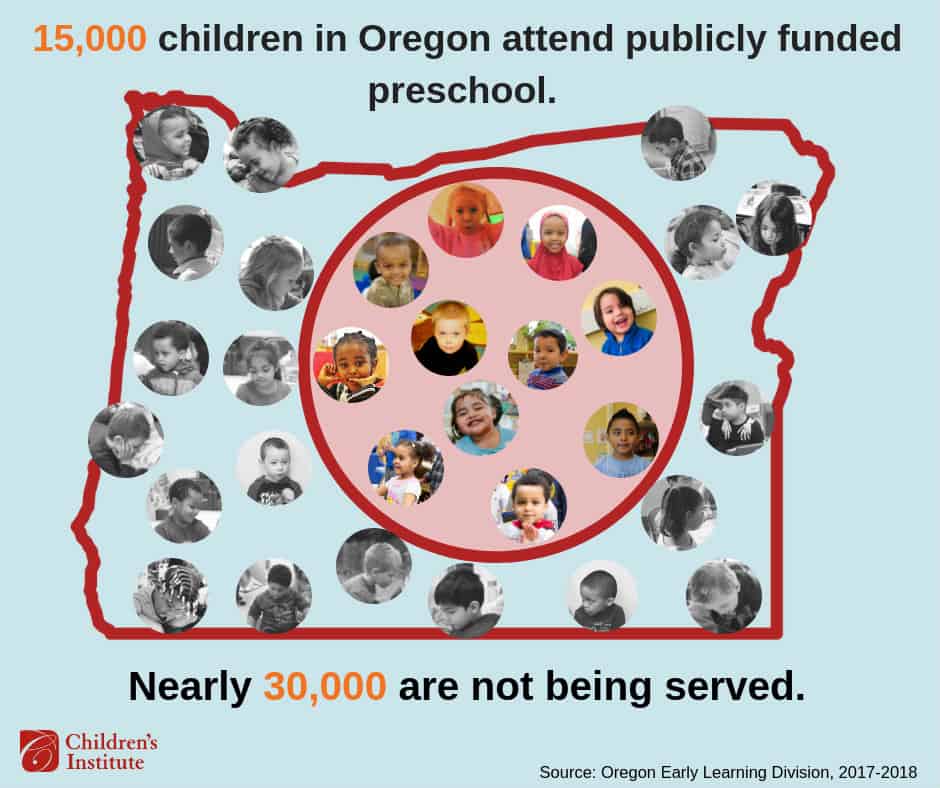
The Early Years Are Critical
Children experience their most profound cognitive, social, and emotional growth in the first eight years of life. Babies are born learners and their brains produce a million neural connections each second. By the time children reach their third birthday, their brains are 80 percent developed. The quality of children’s early experiences during this crucial period of growth sets the foundation for all future learning.
Despite what we understand about the importance of these early years for lifelong healthy development, there is no comprehensive early childhood system in Oregon to ensure all children get what they need to have the best start in life. Many children who experience institutional barriers to opportunity—children from low-income families, children of color, children with disabilities, dual language learners, and children who live in rural areas—lack access to essential high-quality early care and education opportunities.
The Early Years in Oregon
Forty-seven percent of children ages 0–5 in Oregon live at or below 200 percent of the federal poverty level. That’s 129,000 kids. Oregon can improve its support of these children and their families by first addressing our state’s child care crisis. According to a study by the Center for American Progress, Oregon is a child care desert, with 6.8 infants and toddlers for every licensed, available child care slot.
Even if families can find reliable child care in their area, they may not be able to afford it. According to the Economic Policy Institute, one year of infant and toddler child care in Oregon is more expensive than public college tuition; infant care for one child in Oregon accounts for 20 percent of a typical family’s income.
Our state must also invest more in proven programs like Early Head Start and Home Visiting that serve vulnerable families with young children. These evidence-based programs have been shown to increase optimal child development and school readiness, improve mental health for mothers and positive parenting, and decrease child abuse, neglect, and emergency room visits. Currently critical home visiting services reach less than 20 percent of eligible families. Early Head Start serves only 10 percent of eligible children, with more than 23,000 children under 3 left unserved.
Preschool-age children are similarly underserved. Only 8 percent of 3-year-olds and 12 percent of 4-year-olds participate in publicly-funded preschool, putting Oregon 31st out of 43 states reporting on public preschool access. Our public preschool programs need to reach an additional 30,000 eligible children if we want to ensure that all our kids have access to high-quality early childhood education.
The Early Years in Oregon
At a Glance
- 129,000 kids ages 0–5 live at or below 200% of the federal poverty threshold.
- Oregon is a child care desert.
- Oregon is the third most expensive state for child care.
- Home visiting services reach less than 20% of eligible families.
- Early Head Start serves 10% of eligible children.
- Only 8% of 3-year-olds and 12% of 4-year-olds attend publicly funded preschool.
- 30,000 eligible children lack access to publicly funded preschool.
- Only 29% of children in need of early intervention receive the recommended levels of service.
- 8,360 children who need EI/ECSE services do not receive the recommended levels of service.
Finally, while Oregon has prioritized developmental screenings for young children, the state does not invest enough in the Early Intervention (EI) and Early Childhood Special Education (ECSE) children need once they are diagnosed with disabilities and delays. As a result, more than 8,300 children who need EI/ECSE do not receive the recommended levels of service.
What Does This Mean for Children in Oregon?
We know that babies are born learners, and that future success in school and life depends on stable, healthy families and high-quality early care and education.
Gaps in language proficiency between children from low-income families and their more affluent peers are apparent as early as nine months. On the first day of kindergarten, children from lower-income families—the same children who are less likely to have access to high-quality early education—score lower in reading, math, and general knowledge than children from higher-income families.
This “school readiness” gap persists over time. Results from the 2017–2018 Oregon Assessments show a correlation between kindergarten and third grade achievement: children who are less prepared at the start of kindergarten are less likely to be reading at grade level by third grade. Those who aren’t proficient in reading by third grade are four times less likely to graduate from high school.
Here in Oregon, our failure as a state to invest in these early years has clear consequences: in 2016–2017, 67 percent of economically disadvantaged students, 81 percent of students with disabilities, and 85 percent of dual language learners were not reading proficiently by third grade. In 2016, Oregon’s high school graduation rate was 74.8 percent—the third worst in the nation.
We Know What Works
We know what children need from birth to age 5 in order to be prepared for and successful in school. And the good news is, we already have proven programs in Oregon that work well for kids and families. Now is the time for Oregon to invest more in these proven programs so that they serve all eligible children across the state. Learn more about the programs that help ensure every child in Oregon has the best start in life.
Early Intervention and Early Childhood Special Education


